You’ve probably walked past dozens of Arkansas’s most stunning native plants without realizing they could transform your landscape into a pollinator paradise. These hardy species aren’t just beautiful, they’re perfectly adapted to our unpredictable weather patterns, clay soils, and humidity levels that send non-native plants into shock. From spring’s explosive redbud blooms to summer’s drought-tolerant coneflowers, Arkansas natives offer year-round interest while requiring minimal maintenance. The secret lies in understanding which plants thrive in your specific microclimate.
Contents
- 1 Arkansas Soil and Weather Basics
- 2 Arkansas Wildflowers for Color
- 3 Arkansas Native Trees Guide
- 4 Arkansas Native Shrubs for Landscaping
- 5 Selecting the Right Native Plants for Your Garden
- 6 Frequently Asked Questions
- 6.1 How Much Do Native Arkansas Plants Typically Cost Compared to Non-Native Varieties?
- 6.2 When Is the Best Time of Year to Plant Native Species?
- 6.3 How Long Does It Take for Native Plants to Become Established?
- 6.4 Do Native Arkansas Plants Attract Specific Wildlife Like Birds or Butterflies?
- 6.5 Where Can I Purchase Native Arkansas Plants in My Local Area?
Arkansas Soil and Weather Basics
Before you select native plants for your Arkansas landscape, you’ll need to understand the foundation they’ll call home. Arkansas soils fall into three major groups: sands, loams, and clays, each affecting plant growth differently. Silt loam dominates many areas, like Stuttgart’s dark grayish brown surface layer.
Your soil’s texture determines soil moisture retention. Clay holds water longer, while sandy soils drain quickly. Temperature variations also matter—Arkansas ranges from 59 to 65 degrees Fahrenheit annually, with precipitation between 46 to 56 inches. These conditions, combined with your specific soil type, will guide your plant selection success.
Arkansas Wildflowers for Color
Arkansas native wildflowers provide year-round garden interest, from early spring ephemerals through vibrant summer bloomers to late-season asters, thriving in prairie, woodland, and meadow settings. These pollinator-friendly plants like butterfly milkweed attract butterflies and other beneficial insects while supporting overall ecosystem health.
Arkansas Phlox (Phlox Pilosa)
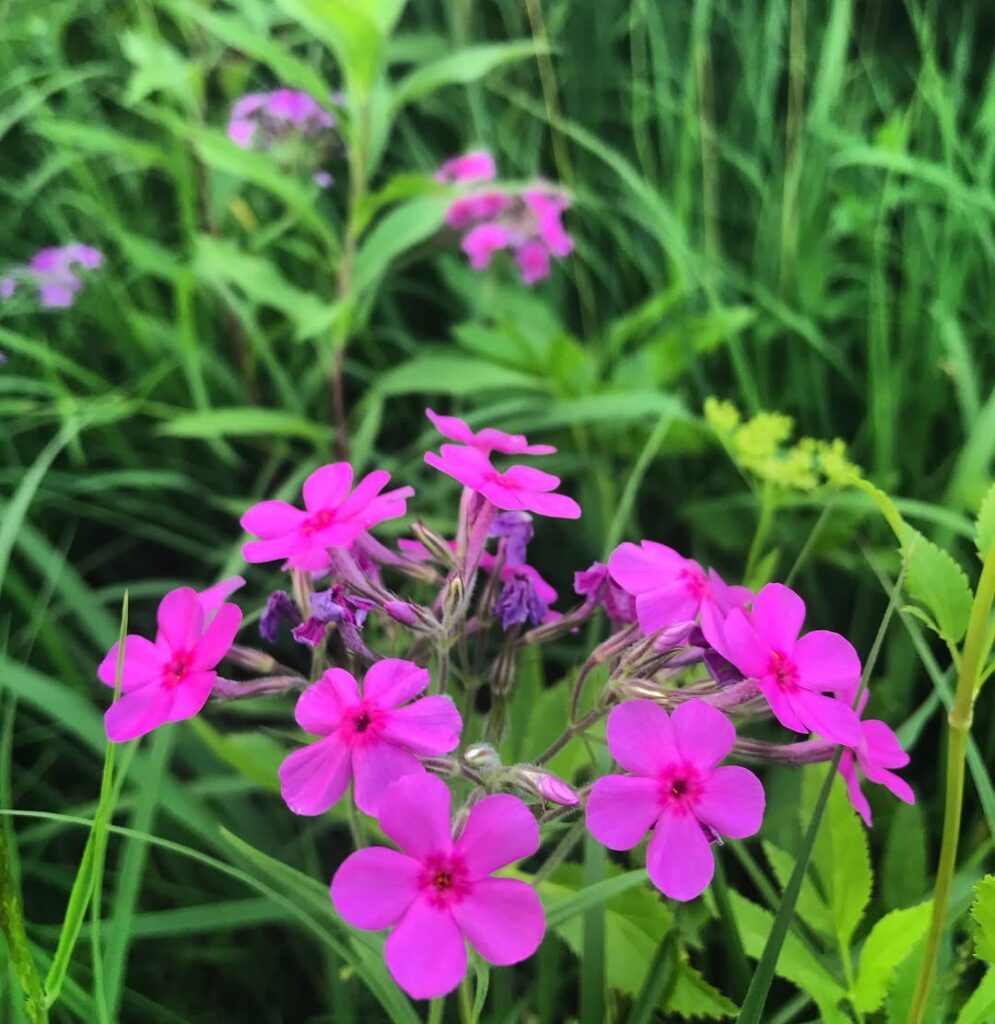
Arkansas Phlox (Phlox pilosa) is a charming semi-evergreen perennial native to Arkansas prairies, growing up to 2 feet tall with distinctive soft white pubescence covering its stems. This fragrant wildflower produces showy clusters of flat-faced flowers in pink, purple, or white with characteristic nectar guides, blooming in loose terminal cymes up to 3/4 inch across.
The tubular flowers feature five petal-like lobes and hidden yellow anthers that produce bright pollen, while the three-chambered fruiting capsules facilitate reproduction alongside clonal growth from shallow white roots. The buoyant seed capsules aid in natural dispersal by floating along water flow. Its semi-evergreen nature and adaptability to various light conditions make it valuable for native prairie and woodland garden settings, providing year-round interest while supporting Arkansas’ indigenous ecosystem.
- Hardiness: Native to Arkansas; adapted to local climate conditions
- Light: Full sun to partial shade; adaptable to woodland conditions
- Water: Moderate moisture requirements; drought tolerant but may go dormant in dry conditions
- Soil: Rich, well-drained, mesic soils; sandy to rocky texture preferred; thrives in black prairie soils
- Fertilizer: Low maintenance; adapted to native soil conditions without supplemental feeding
- Pest/Disease Resistance: Generally resistant as a native species adapted to local conditions
- Growth Rate: Moderate; spreads through both seed production and clonal root growth
Wild Bergamot (Monarda Fistulosa)

Wild Bergamot (Monarda fistulosa) is a showy native perennial that brings vibrant color to Arkansas landscapes from May through September. This hardy wildflower produces distinctive ragged pompom-like flowers in lavender, pink, or white that attract butterflies, bees, and other pollinators. Growing 3-5 feet tall, it spreads via rhizomes to form attractive clumps.
The aromatic, gray-green foliage releases a pleasant mint scent when crushed and has historical medicinal uses. Wild Bergamot thrives in prairies, fields, and naturalized gardens, making it an excellent choice for low-maintenance landscapes that support local wildlife and pollinators. The edible flowers can be used in culinary applications alongside the leaves, which are commonly brewed into tea.
- Hardiness: Perennial, widespread across North America including Arkansas
- Light: Full sun to partial shade
- Water: Drought tolerant once established; benefits from extra water during establishment
- Soil: Prefers well-drained soils; adaptable to various soil types, particularly limy soils
- Fertilizer: Tolerates average soil conditions; no special fertilizer requirements
- Pest/Disease Resistance: Aromatic foliage deters deer and rabbits; susceptible to powdery mildew in humid conditions
- Growth Rate: Moderate to aggressive; spreads by rhizomes and may require periodic thinning every 2-3 years
Purple Coneflower (Echinacea Purpurea)
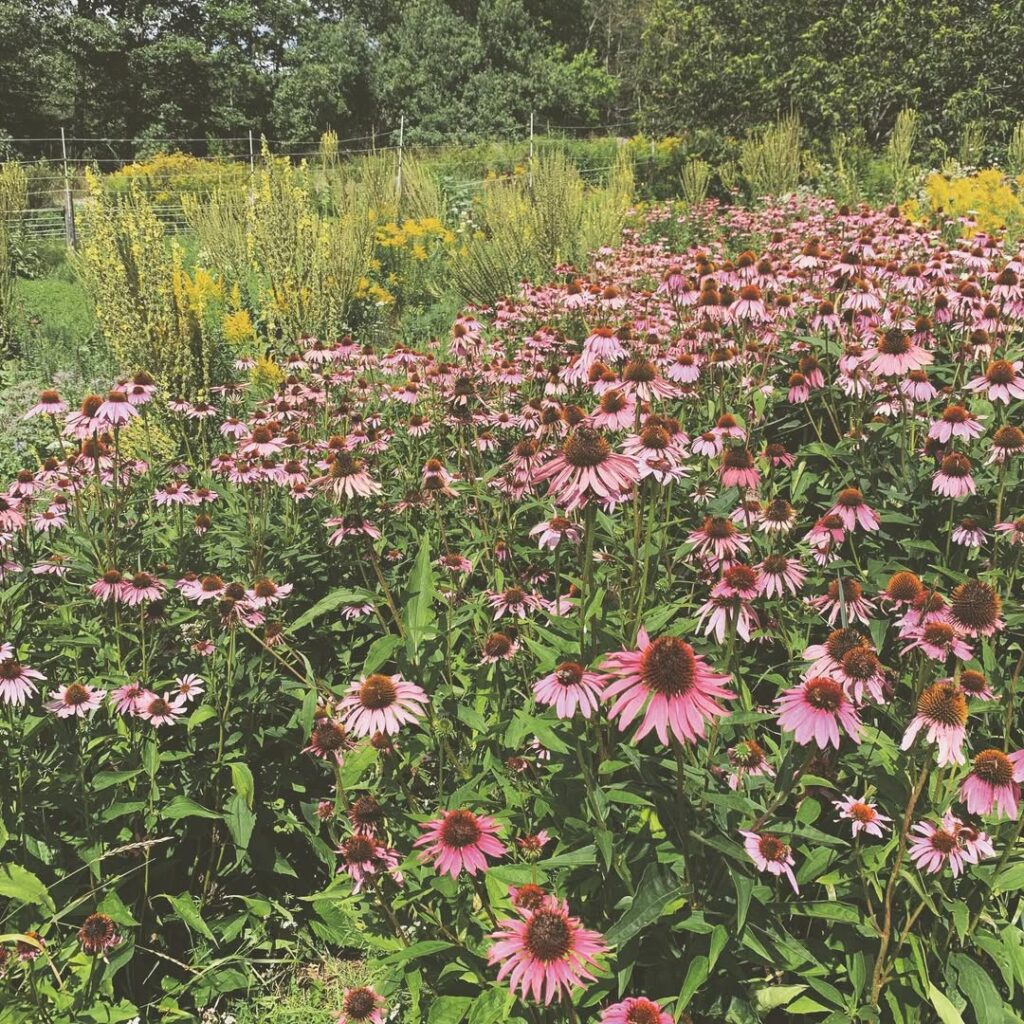
Purple Coneflower (Echinacea purpurea) stands as Arkansas’s most recognizable and widespread native coneflower, distinguished by its broad petiolate leaves and showy purple-pink flower heads that can reach up to 6 inches across. This robust herbaceous perennial grows up to 4 feet tall and blooms continuously from June through October, making it an exceptional choice for extended seasonal color.
As a true Arkansas native thriving in the Ozarks and Mississippi Valley regions, Purple Coneflower excels in the state’s challenging climate conditions while providing vital habitat for native pollinators and birds. Its drought tolerance, heat resistance, and ability to flourish in poor soils make it ideal for low-maintenance wildflower gardens and naturalized landscapes throughout Arkansas. The plant develops a central knobby rootstock that anchors it firmly while supporting its vigorous growth.
- Hardiness: Zones 3-9, extremely cold hardy
- Light: Full sun preferred, tolerates partial shade
- Water: Drought tolerant once established, requires minimal supplemental watering
- Soil: Well-drained soils, tolerates poor and rocky conditions
- Fertilizer: Low to no fertilizer requirements, thrives in native conditions
- Pest/Disease Resistance: Generally resistant to most pests and diseases
- Growth Rate: Moderate, spreads gradually through self-seeding
Black-Eyed Susan (Rudbeckia Hirta)
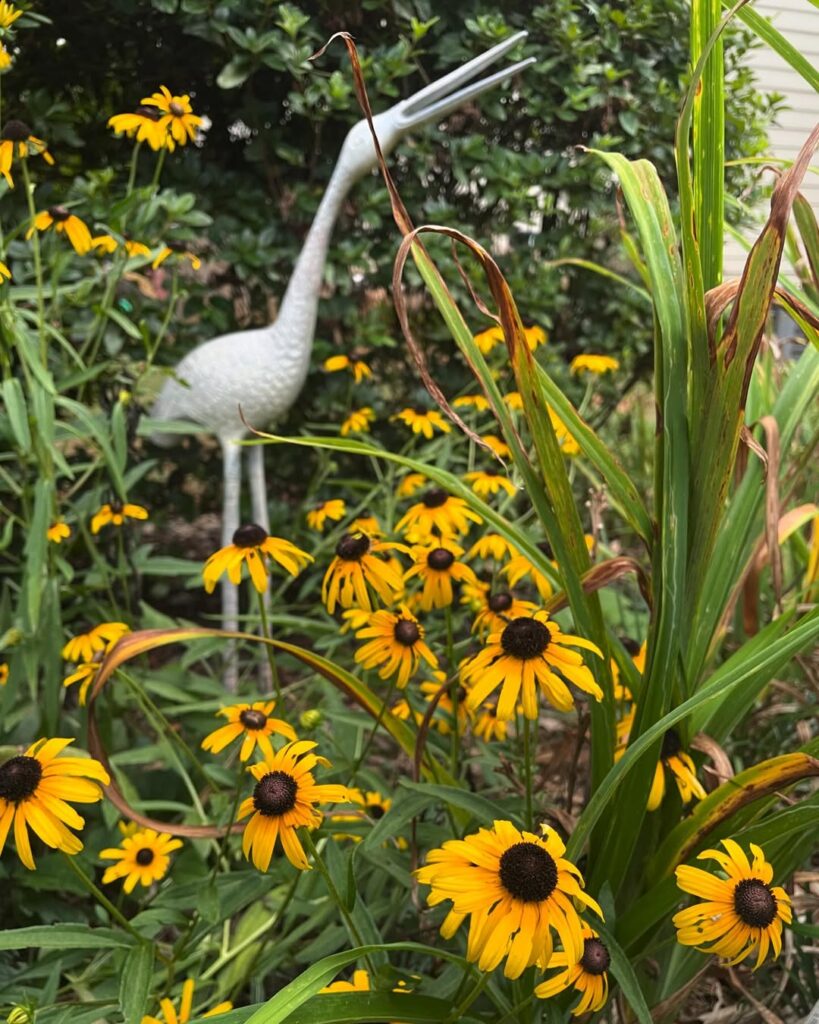
Black-Eyed Susan (Rudbeckia hirta) stands out as one of Arkansas’s most beloved native wildflowers, displaying cheerful yellow daisy-like blooms with distinctive dark brown centers from late spring through fall. This adaptable plant ranges from 1-3 feet tall and thrives in the state’s diverse habitats, from open prairies to roadside ditches.
Beyond its ornamental appeal, Black-Eyed Susan serves as an ecological powerhouse, attracting essential pollinators like bees and butterflies while providing seeds for finches and other birds. Its tolerance for drought and poor soils makes it an excellent choice for low-maintenance landscapes and naturalized settings throughout Arkansas. Black-Eyed Susan differs from its relative brown-eyed Susan by having all unlobed leaves and preferring drier, sunnier locations.
- Hardiness: Annual, biennial, or short-lived perennial depending on conditions
- Light: Full sun for best performance
- Water: Drought tolerant once established; low to moderate water needs
- Soil: Well-drained soils; tolerates poor soil conditions
- Fertilizer: Low fertilizer requirements; thrives in nutrient-poor soils
- Pest/Disease Resistance: High resistance to pests and diseases
- Growth Rate: Moderate; typically flowers in second year from seed
Cardinal Flower (Lobelia Cardinalis)

Cardinal Flower (Lobelia cardinalis) is a stunning native Arkansas wildflower renowned for its brilliant red flower spikes that can reach up to 8 inches long. This herbaceous perennial grows 1-6 feet tall with lance-shaped dark green leaves and distinctive tubular flowers featuring three lower petals and two fused upper petals. Blooming from August through October, Cardinal Flower serves as a primary nectar source for hummingbirds, which are its essential pollinators due to the flower’s specialized tubular structure that most insects cannot navigate. The plant belongs to the Bellflower family and was named after the bright red vestments worn by Roman Catholic Cardinals.
- Hardiness: Hardy throughout Arkansas; native perennial that may function as annual but produces offsets for continued growth
- Light: Partial shade preferred, but tolerates full sun when adequate moisture is present
- Water: Consistently moist to wet soil required; thrives with year-round moisture
- Soil: Wet, moisture-retentive soils; naturally grows in swampy areas, along streams, and in low-lying locations
- Fertilizer: Minimal fertilizer needs as a native wildflower; benefits from organic matter in soil
- Pest/Disease Resistance: Generally resistant to pests and diseases when grown in appropriate conditions
- Growth Rate: Moderate growth rate; may take time to establish but spreads through offsets once established
Arkansas Native Trees Guide
Arkansas boasts over 140 native tree species, from towering oaks to resilient pines, offering diverse ecological benefits, landscape value, and conservation opportunities across the state’s varied eco-regions. These native species include distinctive woodland trees like Hop Hornbeam, which features scale-like bracts on its early catkins and belongs to the birch family.
Bald Cypress (Taxodium Distichum)
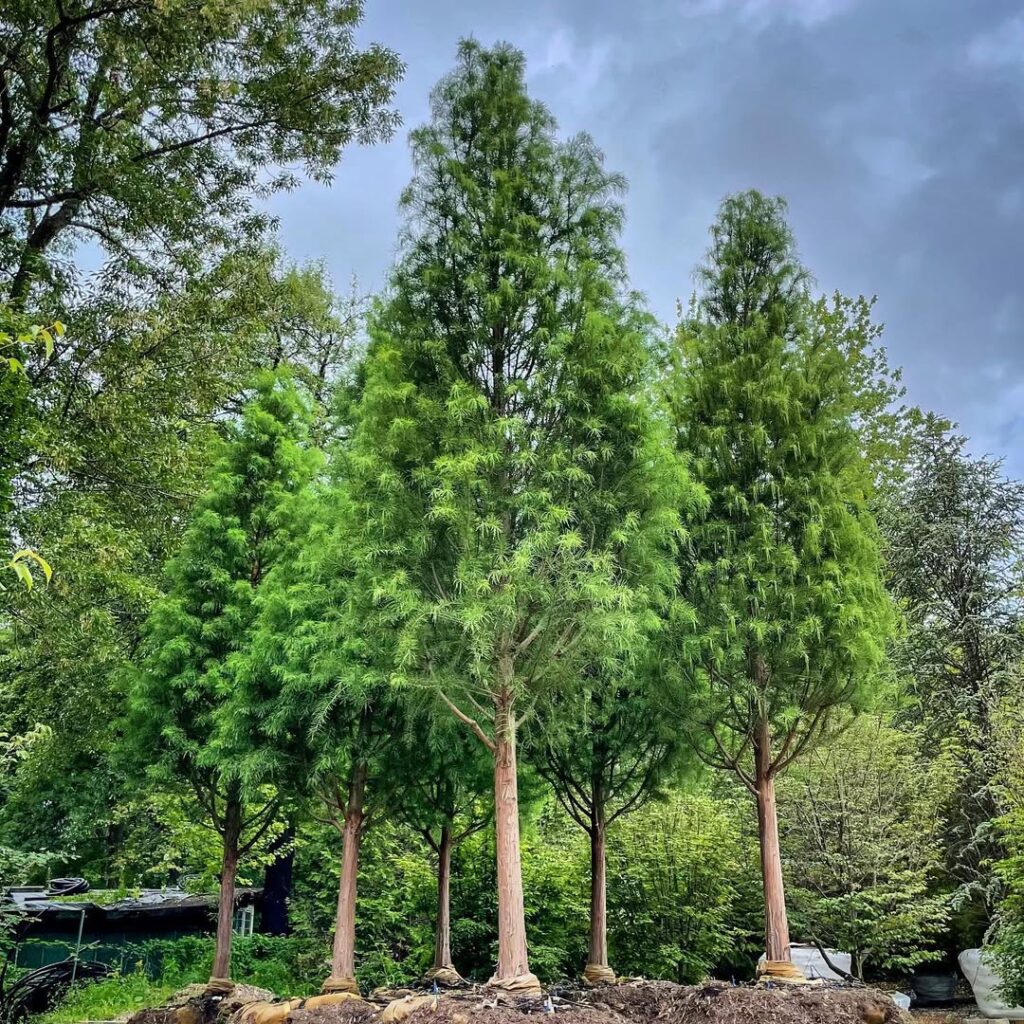
Bald Cypress is Arkansas’s tallest native conifer, reaching heights of 120+ feet with distinctive woody “knees” protruding from its root system. This deciduous conifer showcases delicate, needle-like foliage that transforms to russet-red in fall before dropping. Despite originating in wetlands and swamps throughout the southeastern United States, it adapts remarkably well to various landscape conditions.
The species produces small, round cones and develops a dramatic architectural presence with its tall trunk and broad crown. Its heartwood possesses exceptional rot resistance, making it historically valuable for construction. Bald Cypress serves as Louisiana’s state tree and provides significant wildlife habitat value in both natural and cultivated settings. Urban planners increasingly recognize this street tree for its adaptability and landscaping potential in city environments.
- Hardiness: USDA zones 4-10; native range extends from Virginia to Texas
- Light: Full sun to partial shade
- Water: Highly adaptable; thrives in standing water to drought conditions once established
- Soil: Tolerates wet, dry, salty, and swampy soils; prefers moist, well-draining conditions
- Fertilizer: Low maintenance; typically requires no supplemental fertilization
- Pest/Disease Resistance: Generally resistant to most pests and diseases
- Growth Rate: Fast-growing when young, averaging 2+ feet per year
Southern Magnolia (Magnolia Grandiflora)
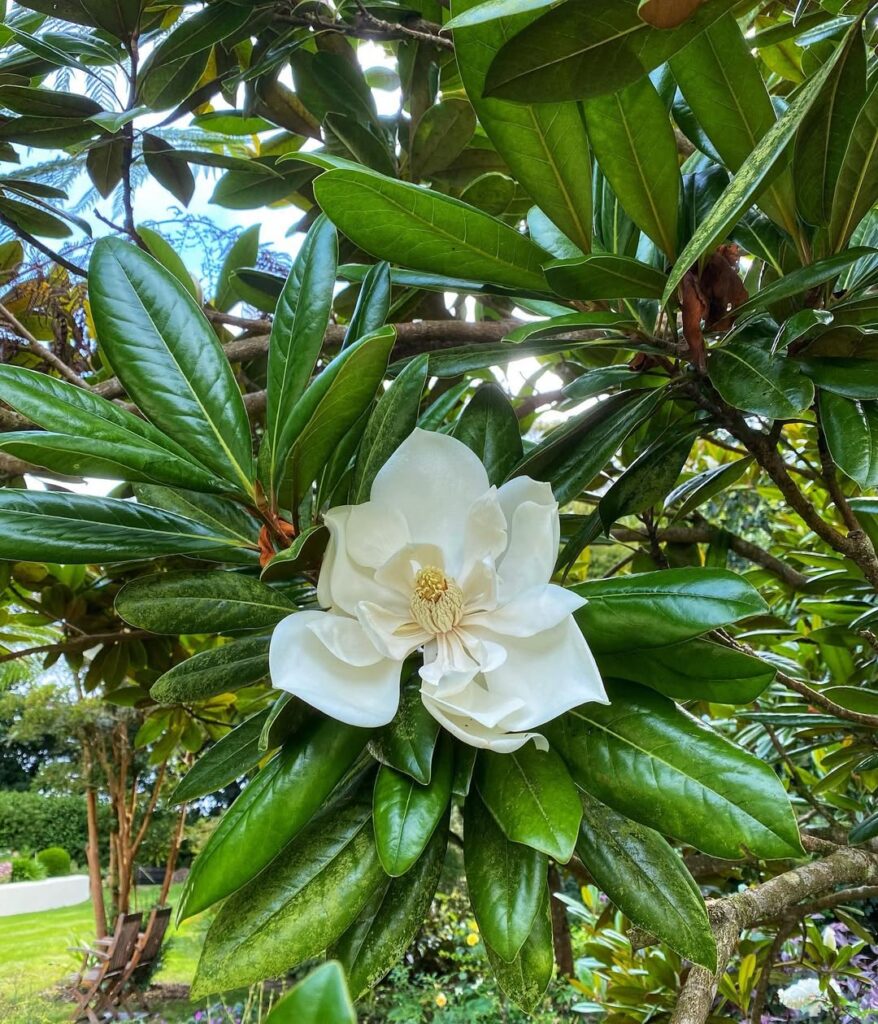
The Southern Magnolia is a majestic evergreen tree reaching 60-90 feet tall with distinctive leathery, glossy dark green leaves featuring rust-brown undersides. This signature tree of the South produces large, fragrant white flowers up to 8 inches across from April through June, followed by cone-like fruit with rose-red seeds. The flowers exhibit unique daily behavior, opening around 9:00 A.M. and closing at night for 2-3 days before disintegrating.
As one of the world’s oldest known tree species, the Southern Magnolia is native to the southeastern United States coastal plain and has become widely planted throughout Arkansas. While requiring substantial space for proper growth, this fast-growing tree creates dense shade and serves as an impressive landscape specimen for those with adequate room.
- Hardiness: USDA zones 7-9, requires protection from winter winds in northern range
- Light: Full sun to partial shade
- Water: Medium water needs, not tolerant of extremely wet or dry conditions
- Soil: Prefers rich, porous, acidic soils but adaptable to sandy, loam, and clay types
- Fertilizer: Benefits from nutrient recycling through chopped fallen leaves
- Pest/Disease Resistance: Generally resistant with few major issues
- Growth Rate: Relatively fast-growing
Redbud (Cercis Canadensis)
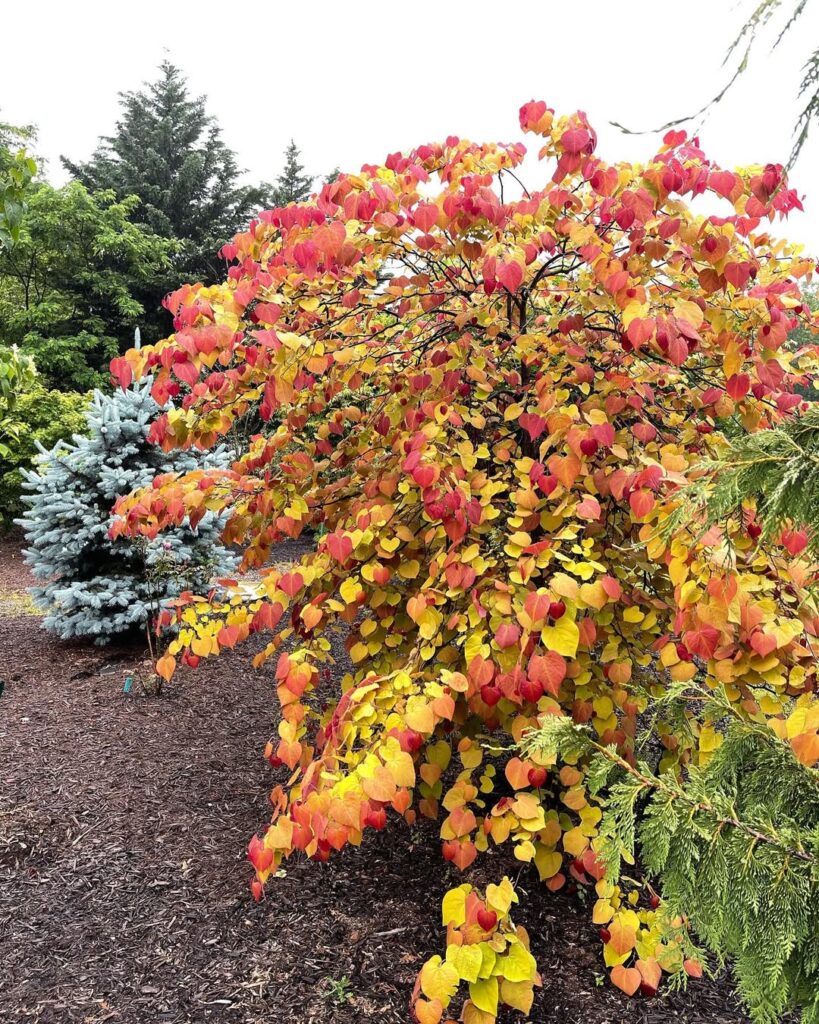
The Redbud (Cercis canadensis) is a beloved native Arkansas tree that announces spring’s arrival with clusters of showy magenta-pink flowers appearing on bare branches in mid-April. This small deciduous tree typically reaches 20-30 feet tall with an equal spread, featuring distinctive heart-shaped leaves and smooth dark bark that becomes scaly with age. As a member of the pea family, it produces flat brown seed pods and thrives in the alkaline soils common throughout Arkansas.
Redbuds are excellent landscape specimens for partial shade locations, offering early spring color before most other trees bloom. The flowers attract long-tongued bees and are followed by reddish new leaves that mature to dark green. While not particularly long-lived, this adaptable native tree grows well in most soil conditions except extremely wet, dry, or acidic sites. These trees have a relatively short lifespan of 35-40 years, making them a medium-term investment for landscape planning.
- Hardiness: USDA zones 4-9
- Light: Partial shade to full sun (prefers partial shade)
- Water: Moderate moisture; not drought tolerant, especially in full sun
- Soil: Well-draining, alkaline soils with pH 6.0-8.0; high calcium and magnesium content preferred
- Fertilizer: Low maintenance; benefits from organic matter in poor soils
- Pest/Disease Resistance: Generally resistant to major pests and diseases
- Growth Rate: Moderate to fast when young, slowing with maturity
White Oak (Quercus Alba)
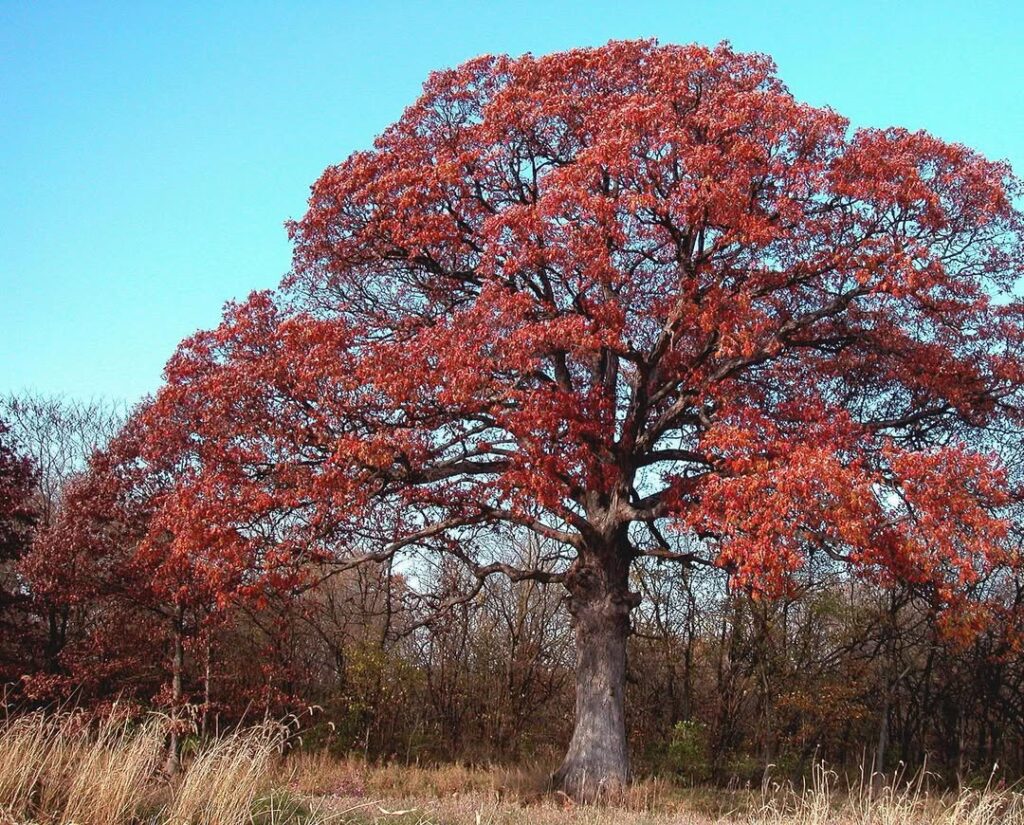
White Oak (Quercus alba) stands as one of Arkansas’s most majestic native trees, reaching heights of 80-100 feet with a distinctive wide-spreading crown. This deciduous giant features deeply lobed leaves with smooth margins that emerge rose-colored in spring, mature to dark green, and transform to striking purple in fall. The tree’s furrowed black bark adds textural interest to landscapes year-round.
As a slow-growing but exceptionally long-lived species, White Oak can survive up to 600 years, making it an investment for future generations. The tree produces tan to brown acorns in pairs every 4-10 years, providing valuable wildlife food. Its imposing stature and artistic growth habit make it ideal for large landscapes where its eventual massive size can be accommodated.
White Oak blooms from March through May with distinctive yellow-green catkins that appear just before or with the emergence of new leaves. The timber from this species serves as an important lumber source for crafting furniture, flooring, and whiskey barrels due to its exceptional strength and durability.
- Hardiness: Zones 3-9
- Light: Full sun to partial shade
- Water: Moderate; drought tolerant once established
- Soil: Well-drained, adaptable to most soil types except very dry, shallow soils
- Fertilizer: Generally not required; benefits from organic matter
- Pest/Disease Resistance: Good resistance to most pests and diseases
- Growth Rate: Slow to medium
Shortleaf Pine (Pinus Echinata)

Shortleaf Pine (Pinus echinata) is Arkansas’s most adaptable native conifer and one of the southeastern United States’ most important commercial trees. This evergreen reaches 80-100 feet tall with a variable crown form and develops a distinctive J-shaped crook near the ground in seedlings. The species features mixed bundles of 2-3 needles and produces persistent cones with thin scales.
Known by regional names like Arkansas soft pine or oldfield pine, this species quickly colonizes disturbed areas and old fields throughout the Ouachita Mountains. Its unique ability to resprout from buds near the ground crook after fire damage makes it particularly valuable for reforestation and erosion control in Arkansas landscapes. The lower two-thirds of mature trees typically remain devoid of branches, creating a clean trunk appearance.
- Hardiness: USDA zones 6-9, least exacting temperature requirements among southern pines
- Light: Full sun to partial shade, tolerates various light conditions
- Water: Moderate moisture needs, annual precipitation 40-60 inches, drought tolerant once established
- Soil: Adaptable to wide range of soil types and conditions, not particular about soil requirements
- Fertilizer: Low fertility needs, thrives in poor soils without supplemental feeding
- Pest/Disease Resistance: Good resistance, bark contains resin pockets that help defend against insects
- Growth Rate: Moderate to slow, particularly during early establishment years
Arkansas Native Shrubs for Landscaping
Arkansas native shrubs offer diverse landscaping options, from deciduous varieties like deerberry to evergreen hollies and colorful flowering species, while avoiding invasive alternatives through proper selection resources. These adaptable plants thrive in well-drained soils and various light conditions, making them excellent choices for sustainable garden design.
Spicebush (Lindera Benzoin)

Spicebush (Lindera benzoin) is a deciduous understory shrub native to Arkansas that reaches 6-10 feet in height and width. This dioecious plant produces fragrant yellow-green flowers in early spring before leaves emerge, creating early-season interest in the landscape. The entire plant is pleasantly aromatic when crushed, with stems shifting from light green to shiny brown as they mature.
As a host plant for the spicebush swallowtail butterfly, this shrub provides important ecological value while adding structural interest to gardens. It forms dense clumps with multiple spreading stems and thrives in Arkansas’s natural woodland bottomlands and floodplains. The plant’s ability to regrow from roots after drought-induced dieback makes it a resilient addition to native landscapes. In late summer and fall, female plants produce bright red drupes that create striking color contrast against the yellow autumn foliage.
- Hardiness: USDA zones 4-9
- Light: Full to partial shade
- Water: Moist to wet conditions preferred
- Soil: Fertile, loamy soils; tolerates saturated wetland conditions
- Fertilizer: Not typically required in suitable growing conditions
- Pest/Disease Resistance: Generally resistant with few major issues
- Growth Rate: Moderate, forming spreading clumps over time
American Beautyberry (Callicarpa Americana)
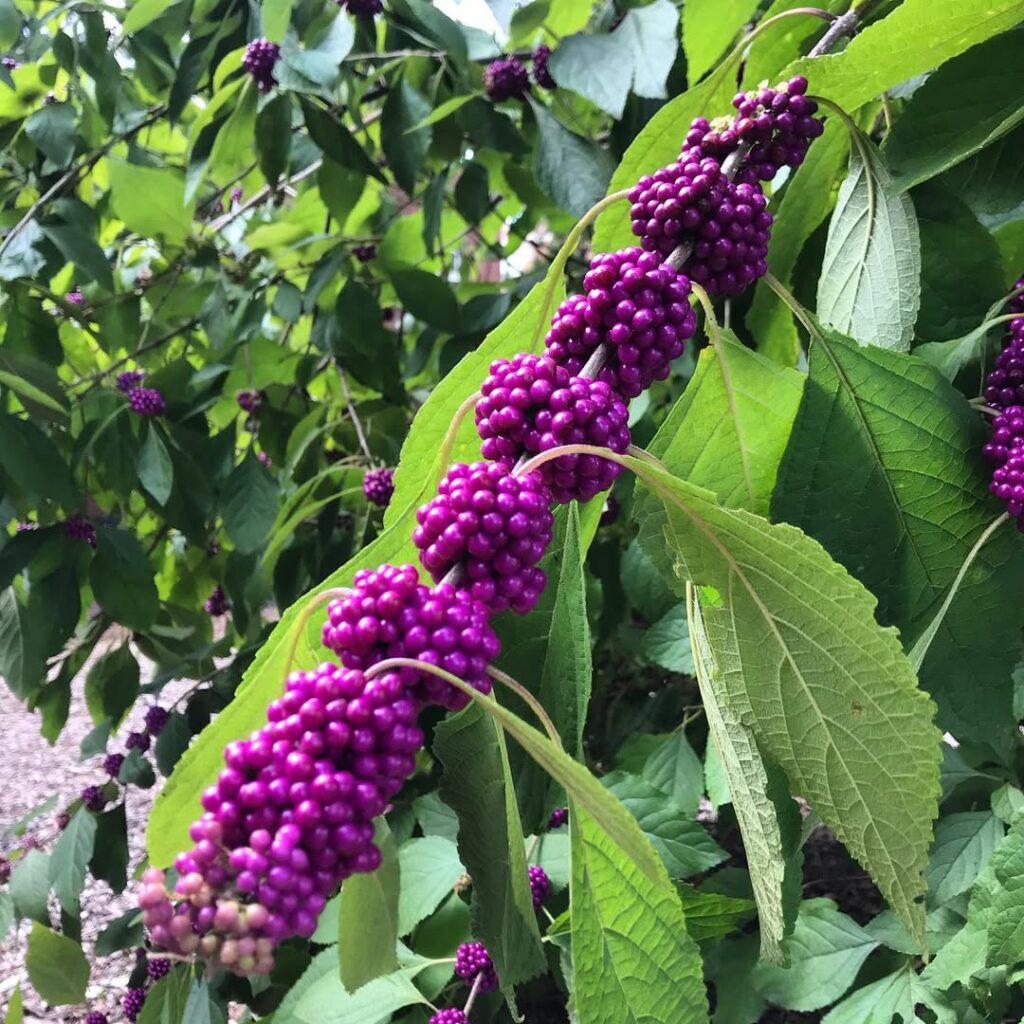
American Beautyberry is a deciduous native shrub that adds exceptional ornamental value to Arkansas landscapes. Growing 3-5 feet tall and wide, this adaptable plant produces delicate pink to lavender flowers in summer followed by striking clusters of glossy, iridescent-purple berries that persist through winter. The berries provide essential food for songbirds and small mammals, while flowers attract beneficial pollinators.
This low-maintenance shrub thrives in naturalistic and wildlife gardens, offering both aesthetic appeal and ecological benefits. Its arching branches create an attractive open form, and the yellow-green autumn foliage adds seasonal interest. The plant belongs to the Mint family, sharing this botanical classification with many aromatic herbs. Annual late-winter pruning encourages vigorous growth and prolific fruiting, making it an excellent choice for gardeners seeking native plants that support local wildlife while requiring minimal care.
- Hardiness: Native to Arkansas and southeastern United States; winter hardy in Arkansas climates
- Light: Full sun to part shade; intolerant of deep shade
- Water: Moderate moisture requirements; does not tolerate prolonged wet or droughty conditions
- Soil: Well-drained soil; tolerates variety of soil types with adequate drainage
- Fertilizer: Low fertilizer requirements once established
- Pest/Disease Resistance: Generally pest and disease resistant; leaves naturally repel mosquitoes, ticks, and fire ants
- Growth Rate: Moderate growth rate; reaches mature size of 3-5 feet, up to 9-12 feet in favorable conditions
Elderberry (Sambucus Canadensis)
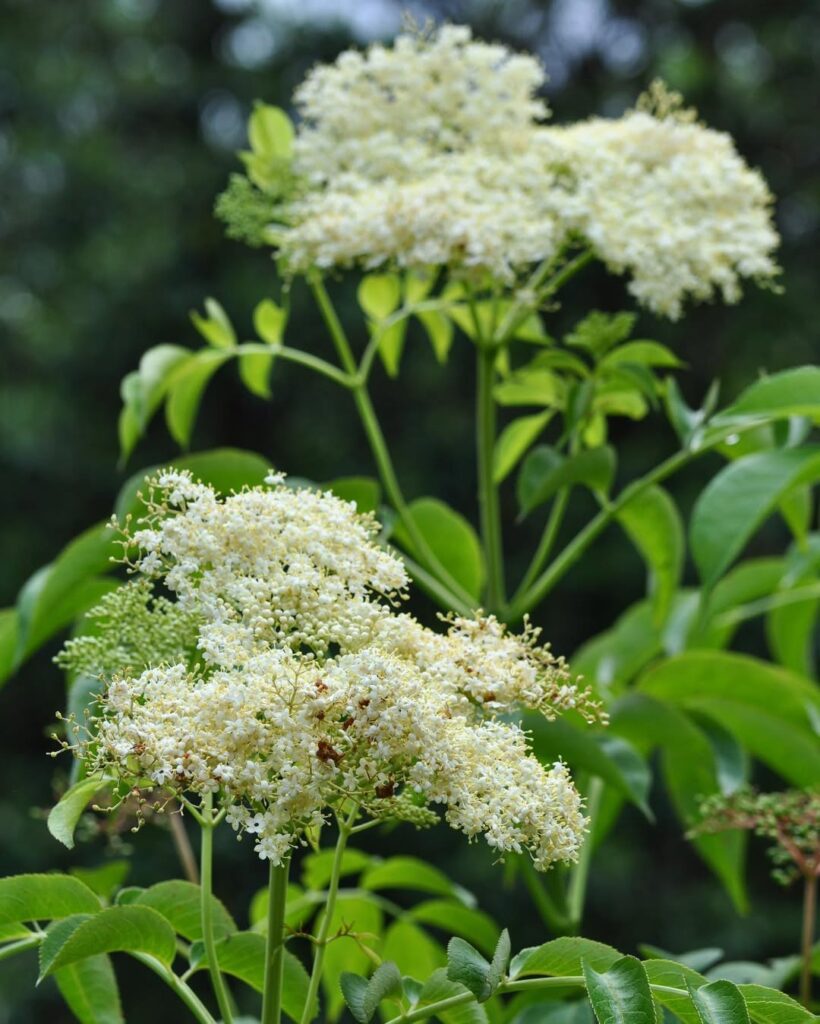
Elderberry (Sambucus canadensis) is a versatile native Arkansas shrub that brings year-round beauty and ecological value to landscapes. This deciduous perennial grows 8-12 feet tall with a multi-stemmed, arching habit that produces showy white flower clusters in late spring, followed by nutritious purple-black berries in summer. Beyond its ornamental appeal, elderberry serves as an excellent wildlife plant, attracting pollinators to its blooms and providing food for birds and mammals through its fruit.
This hardy shrub excels in naturalized settings, privacy screens, and rain gardens while offering remarkable adaptability to various growing conditions. Its rapid establishment, low maintenance requirements, and ability to form beneficial thickets make elderberry a superb choice for erosion control and habitat creation in Arkansas landscapes. The stems contain a distinctive large pith that becomes hollow with age, contributing to the plant’s unique structural characteristics.
- Hardiness: USDA zones 3-9
- Light: Full sun to partial shade; prefers more sunlight for best flowering
- Water: Prefers consistently moist, well-drained soil but adapts to average conditions
- Soil: Thrives in various soil types; naturally found in alluvial and riparian areas
- Fertilizer: Low maintenance; typically requires no supplemental fertilization
- Pest/Disease Resistance: Excellent; resistant to rabbits and wind damage
- Growth Rate: Fast-growing; reaches mature size within a few years
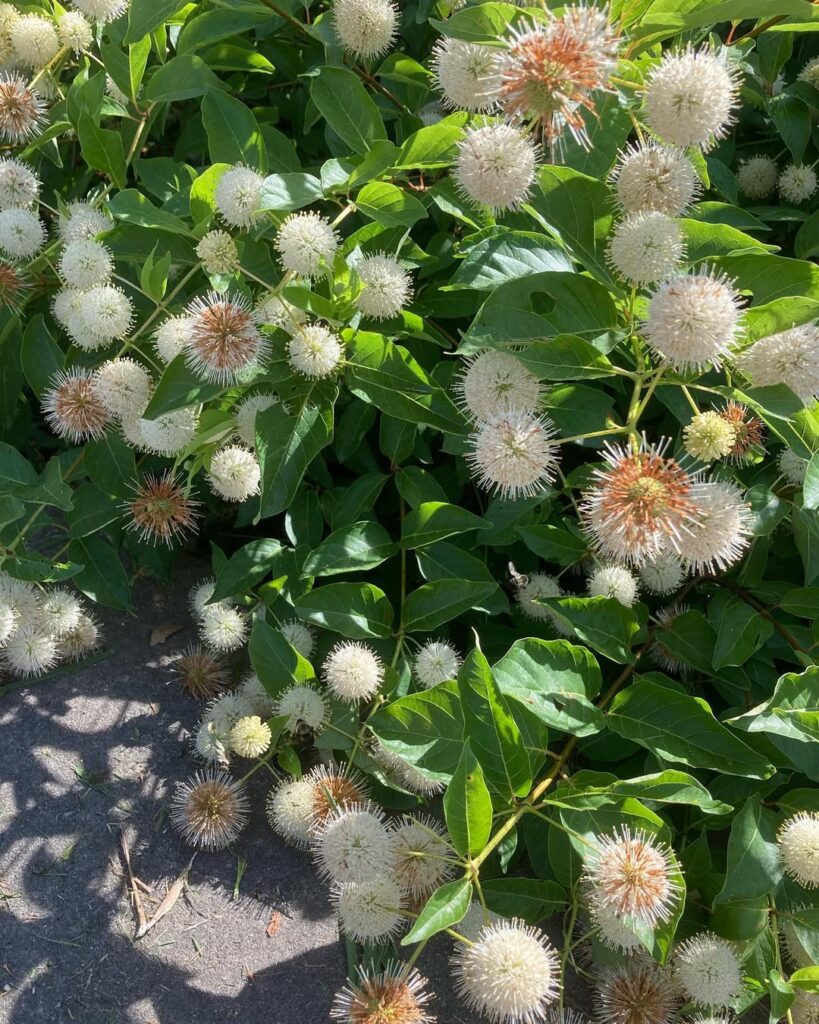
Buttonbush is a distinctive Arkansas native shrub that produces striking spherical clusters of fragrant white flowers from June through September, resembling pincushions. Growing 3-8 feet tall with an open, multi-stemmed habit, this deciduous shrub thrives in wet environments like pond margins, swamps, and streambanks. As the only woody member of the Rubiaceae family in Arkansas, it’s easily identified by its unique flower heads and simple, opposite leaves.
This versatile shrub provides exceptional wildlife value, attracting butterflies, bees, hummingbirds, and other pollinators while offering winter food through its persistent reddish-brown fruit heads. Its strong architectural presence and adaptability make it excellent for water gardens, wetland restoration, and erosion control on pond banks. The fruiting heads are dispersed by water and persist throughout winter months, providing visual interest even after the growing season ends.
- Hardiness: Native throughout Arkansas and North America; heat and cold tolerant
- Light: Full sun to partial shade; best flowering in sunny locations
- Water: Requires consistently moist to wet soil; thrives in boggy or shallow-water sites
- Soil: Tolerates various soil types except dry soils; prefers fertile, wet conditions
- Fertilizer: Low maintenance; thrives in natural wetland conditions without supplemental feeding
- Pest/Disease Resistance: Generally pest-free; moderately deer resistant
- Growth Rate: Moderate growth rate; easily established from cuttings
Oakleaf Hydrangea (Hydrangea Quercifolia)

Oakleaf Hydrangea is a stunning Arkansas native deciduous shrub that reaches 6 feet tall by 9 feet wide. Named for its distinctive oak-shaped leaves, this versatile shrub produces showy panicles of white to cream flowers from May to June that mature to pink or red. The large, coarse-textured foliage provides bold visual impact throughout the growing season.
This multi-season performer offers outstanding ornamental value with vibrant fall colors of maroon, purple, red, and bronze, plus attractive cinnamon-brown exfoliating bark that adds winter interest. Perfect as a focal point in garden beds, mass plantings, or woodland gardens, it also supports local wildlife by attracting pollinators and providing nesting habitat while requiring minimal maintenance. The dried flower heads retain their structure after blooming and can be harvested for attractive dried arrangements.
- Hardiness: USDA zones 5-9
- Light: Part shade to full shade preferred, especially in Arkansas summers
- Water: Adequate moisture required, especially during hot periods; not drought-tolerant
- Soil: Well-drained, slightly acidic soil preferred
- Fertilizer: Minimal fertilizer needs
- Pest/Disease Resistance: Good resistance with minimal pest issues
- Growth Rate: Moderate growth rate
Selecting the Right Native Plants for Your Garden
When you’re choosing native plants for your Arkansas garden, success depends on matching each species to the specific conditions where it naturally thrives. Your native plant selection should consider sun exposure, moisture levels, and soil type first. Smart garden design starts with observing your landscape’s microclimates throughout different seasons.
Consider fringe trees for smaller spaces, reaching 20 feet tall and 12-15 feet wide. They’ll produce berries that attract birds if you plant female varieties. Blue-eyed grass works perfectly as ground cover, offering pale blue flowers in late spring.
Use resources like ANHC’s native plant guides and the Arkansas Plant Database to identify species suited for your specific conditions. Established native plants require minimal irrigation beyond natural rainfall, making them an excellent choice for water-conscious gardeners.
Frequently Asked Questions
How Much Do Native Arkansas Plants Typically Cost Compared to Non-Native Varieties?
When comparing native plant pricing, you’ll find Arkansas natives cost less long-term than non-natives. Initial cost comparison shows native plugs around $125 versus $322 for commercial varieties, plus you’ll save on water and maintenance.
When Is the Best Time of Year to Plant Native Species?
Surprisingly, you can’t just toss seeds whenever you’re feeling gardening inspiration! October offers ideal planting times for natives, with warm soil encouraging roots while cool air signals winter prep—perfect seasonal considerations.
How Long Does It Take for Native Plants to Become Established?
Most native plants need 2-3 years to fully establish, though establishment timeframe varies by species. Perennials establish within 1-2 years under favorable growth conditions, while woody plants require 3-5 years for significant development.
Do Native Arkansas Plants Attract Specific Wildlife Like Birds or Butterflies?
Like magnets drawing metal, native Arkansas plants attract specific wildlife through specialized relationships. You’ll discover wildlife benefits when monarchs seek milkweed and songbirds hunt insects among natives, creating remarkable garden diversity.
Where Can I Purchase Native Arkansas Plants in My Local Area?
You can find native Arkansas plants at local nurseries like Pine Ridge Gardens and White River Nursery, or through online retailers such as Garden for Wildlife and Missouri Wildflowers Nursery that ship regionally.
